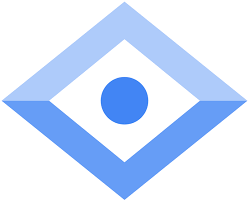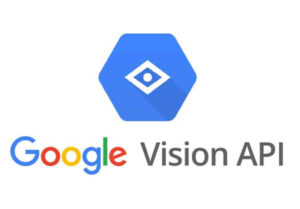Google Cloud Vision

The An Overview of Google Cloud Vision: Empowering Applications with AI-Powered Image Analysis:
Google Cloud Vision API: The increasing demand for automated, intelligent image analysis has led to the development of powerful tools that leverage artificial intelligence (AI) and machine learning (ML). One of the most prominent platforms offering such capabilities is Google Cloud Vision API.
What is Google Cloud Vision?
Google Cloud Vision API is a cloud-based service that provides developers with pre-trained machine learning models to analyze and understand the content of images.
Key Features of Google Cloud Vision:
Google Cloud Vision offers a wide range of features that can be used to perform advanced image analysis. These features are pre-trained and ready to use, which saves both time and computational resources for developers. Below are some of the core features:
-
Label Detection:
- The Vision API can automatically identify and categorize objects, scenes, and concepts within an image. This feature returns descriptive labels, such as “dog,” “car,” “beach,” or “tree,” providing a high-level understanding of the image content.
-
Object Localization and Detection:
- The API can detect specific objects within an image, such as people, animals, vehicles, and products. It not only identifies these objects but also provides their location by generating bounding boxes around them.
-
Face Detection:
- Google Cloud Vision can detect faces within an image, recognizing facial features like eyes, nose, and mouth. It can also analyze facial expressions to identify emotions such as happiness, sadness, anger, or surprise. However, the API does not identify or store personally identifiable information (PII) like who the individual is, ensuring privacy.
-
Landmark Detection:
- The API can identify famous natural and man-made landmarks within an image, such as the Eiffel Tower or Mount Everest. This feature is useful for tourism apps, image indexing, and geolocation-based applications.
-
Logo Detection:
- Businesses can use Google Cloud Vision to detect brand logos in images. This can be helpful for marketers, media companies, and advertisers who want to monitor brand presence across various media platforms.
- Safe Search Detection: Google Cloud Vision includes a “Safe Search” feature that helps detect potentially inappropriate content in images, such as adult content, violence, and explicit material. This is especially useful for platforms that rely on user-generated content, ensuring safe and compliant uploads.
- Image Properties Analysis: The API can analyze images for color information and return a dominant color palette. This is useful in design, marketing, and creative industries where color extraction plays a significant role in branding or visual aesthetics.
- Product Search: Google Cloud Vision offers a product search feature that allows users to upload an image of a product (e.g., shoes, clothing, accessories), and the API will match it with visually similar products. This feature is invaluable for e-commerce platforms that want to offer image-based product search functionality.
- Custom Model Integration: Developers can also integrate AutoML Vision, part of Google Cloud’s AutoML suite, to train custom models for specific image recognition tasks. This allows businesses to create models tailored to their own datasets and requirements.
How Google Cloud Vision Works:
At its core, Google Cloud Vision is powered by deep learning models, particularly convolutional neural networks (CNNs), which are adept at image processing tasks. Here’s how the typical workflow of using Google Cloud Vision looks:
- Image Input: The first step involves feeding an image (or a batch of images) to the Vision API through a REST call or client library. The image can be in various formats, including JPEG, PNG, or GIF.
- Analysis: The Vision API processes the image by applying pre-trained deep learning models. Depending on the features selected, it performs various analyses such as detecting objects, extracting text, or identifying logos.
- Response: The API returns structured JSON responses, containing detailed information about the objects, labels, faces, or text found in the image. This response is then used by the application to present or process further.
Applications of Google Cloud Vision:

Google Cloud is used across various industries, enabling innovative solutions that rely on image analysis. Here are some real-world applications of the Vision API:
- E-Commerce and Retail:
- Product Search: E-commerce platforms to offer customers image-based searches, where users upload photos of products and the system returns visually similar items.
- Catalog Management: Retailers can automate product tagging and categorization by using label detection and object recognition, reducing manual efforts in managing inventory.
- Healthcare:
- Medical Image Analysis: The Vision API can assist in analyzing medical images such as X-rays and CT scans to identify anomalies or patterns indicative of certain diseases. This accelerates diagnostic processes and reduces human error.
Benefits of Using Google Cloud Vision:
- Scalability: Being a cloud-based service, Google can scale to handle massive datasets or high volumes of images without requiring significant infrastructure investments.
- Pre-Trained Models: The Vision API comes with pre-trained models that save businesses the effort of building and training their own models from scratch. This reduces the time to market for new AI-powered applications.
Limitations and Challenges:
- In such cases, custom model training via AutoML Vision may be necessary.
- Cost: Google operates on a pay-per-use model. For businesses that process large volumes of images, costs can accumulate quickly. However, Google offers a free tier with limited usage, which can be sufficient for smaller projects.
- Privacy Concerns: Using cloud-based image recognition services can raise privacy concerns, particularly when dealing with sensitive data such as facial recognition or medical images. Developers must ensure that they comply with privacy regulations and safeguard users’ data.
Conclusion:
Google Cloud Vision is a powerful tool that brings advanced image analysis capabilities to developers, businesses, and researchers.
